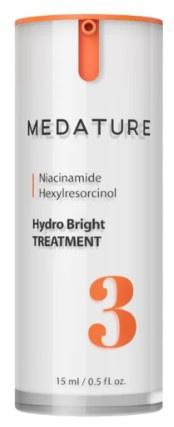Uses and Safety of Natamycin
Mar 3,2022
Natamycin is a new biochemical pesticide active ingredient intended for use as a fungistat to control the germination of mold and yeast spores in the growth media of mushrooms produced in enclosed mushroom production facilities. Natamycin is a naturally-occurring antimycotic compound derived from the common soil microorganisms, Streptomyces natalensis, Streptomyces lydicus, and Streptomyces chattanoogensis.

Mechanism of action
Natamycin is a tetraene polyene antibiotic derived from Streptomyces natalensis. It possesses in vitro activity against a variety of yeast and filamentous fungi, including Candida, Aspergillus, Cephalosporium, Fusarium and Penicillium.
The mechanism of action appears to be through binding of the molecule to the sterol moiety of the fungal cell membrane. The polyenesterol complex alters the permeability of the membrane to produce depletion of essential cellular constituents. Although the activity against fungi is dose-related, natamycin is predominantly fungicidal.* Natamycin is not effective in vitro against gram-positive or gram-negative bacteria. Topical administration appears to produce effective concentrations of natamycin within the corneal stroma but not in intraocular fluid.
Uses
Natamycin has been used as a food preservative worldwide for over 40 years (WHO TRS 430) and is approved as a food additive/preservative by the European Union, the World Health Organization and individual countries for use as a fungistat to suppress mold on cheese, meats and sausage. In the United States, Natamycin is approved by The Food and Drug Administration (FDA) as a direct food additive/ preservative for the inhibition of mold and yeast on the surface of cheeses (21CFR172.155) and as an additive to the feed and drinking water of broiler chickens to retard the growth of specific molds (21CFR573.685).
Natamycin is also FDA approved for use as a treatment to suppress fungal eye infections such as blepharitis, conjunctivitis and keratitis. On August 17, 2007, the EPA’s Biochemical Classification Committee classified Natamycin as a Biochemical Pesticide active ingredient, and -Streptomyces lydicus (the source of Natamycin) is currently registered by the Agency under Registration Nos. 73314-1, -2, and -4 as a microbial pesticide for greenhouse, nursery, turfgrass, agricultural, and seed treatment uses.
Safety
Natamycin does not have acute toxicity. In animal studies, the lowest LD50 found was 2.5-4.5 g/kg.In rats, the LD50 is ≥2300 mg/kg, and doses of 500 mg/kg/day over 2 years caused no detectable differences in survival rate, growth, or incidence of tumors. The metabolites of natamycin also lack toxicity. The breakdown products of natamycin under various storage conditions may have a lower LD50 than natamycin, but in all cases, the numbers are quite high. In humans, a dose of 500 mg/kg/day repeated over multiple days caused nausea, vomiting, and diarrhea.
No evidence shows natamycin, at either pharmacological levels or levels encountered as a food additive, can harm normal intestinal flora, but definitive research may not be available.However, some people are allergic to natamycin.
The EFSA has concluded that the use of natamycin as a food additive has no relevant risk for the development of resistant fungi.
- Related articles
- Related Qustion
- Natamycin: Production, Mechanism of action and Application Apr 28, 2024
Natamycin is a polyene macrolide antifungal agent, a naturally occurring antimicrobial peptide, produced by Streptomyces natalensis strains, which is effective in inhibiting yeasts, filamentous fungal pathogens, moulds and various mycotoxin
- Does natamycin have side effects? Mar 16, 2024
When applied topically, natamycin is highly effective and well tolerated in the treatment of cutaneous and mucocutaneous candidoses. Local irritations and allergic reactions may occur in rare cases and are mostly due to the galenic formulat
GLA-rich vegetable oils have been evaluated in a variety of clinical conditions. The oils have been reported to have a skin barrier repairing effect, to normalize excessive transepidermal water loss (TEWL).....
Mar 3,2022Plant extractsHexylresorcinol (HR) is an alkylresorcinol (AR), a type of phenolic lipid, having an n-hexyl chain attached to the 4 position of the 1,3-dihydroxybenzene ring. It can be synthesized by reacting resorcinol with hexanoyl chloride.....
Mar 3,2022Antineoplastic agentsNatamycin
7681-93-8You may like
- Pimaricin
-

- $1.00 / 1g
- 2025-12-17
- CAS:7681-93-8
- Min. Order: 1g
- Purity: 0.99
- Supply Ability: 20 tons
- Natamycin
-

- $0.00 / 1Kg/Bag
- 2025-12-17
- CAS:7681-93-8
- Min. Order: 1KG
- Purity: 95%; USP
- Supply Ability: 1000KG
- Natamycin
-

- $0.00 / 1kg
- 2025-12-17
- CAS:7681-93-8
- Min. Order: 1kg
- Purity: 98%
- Supply Ability: Customise






